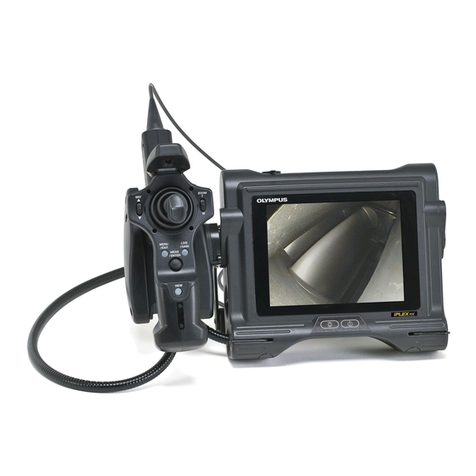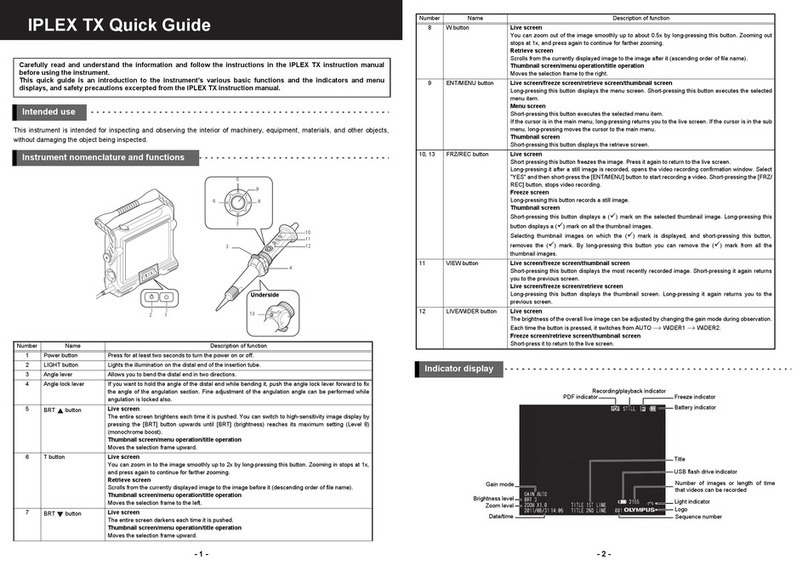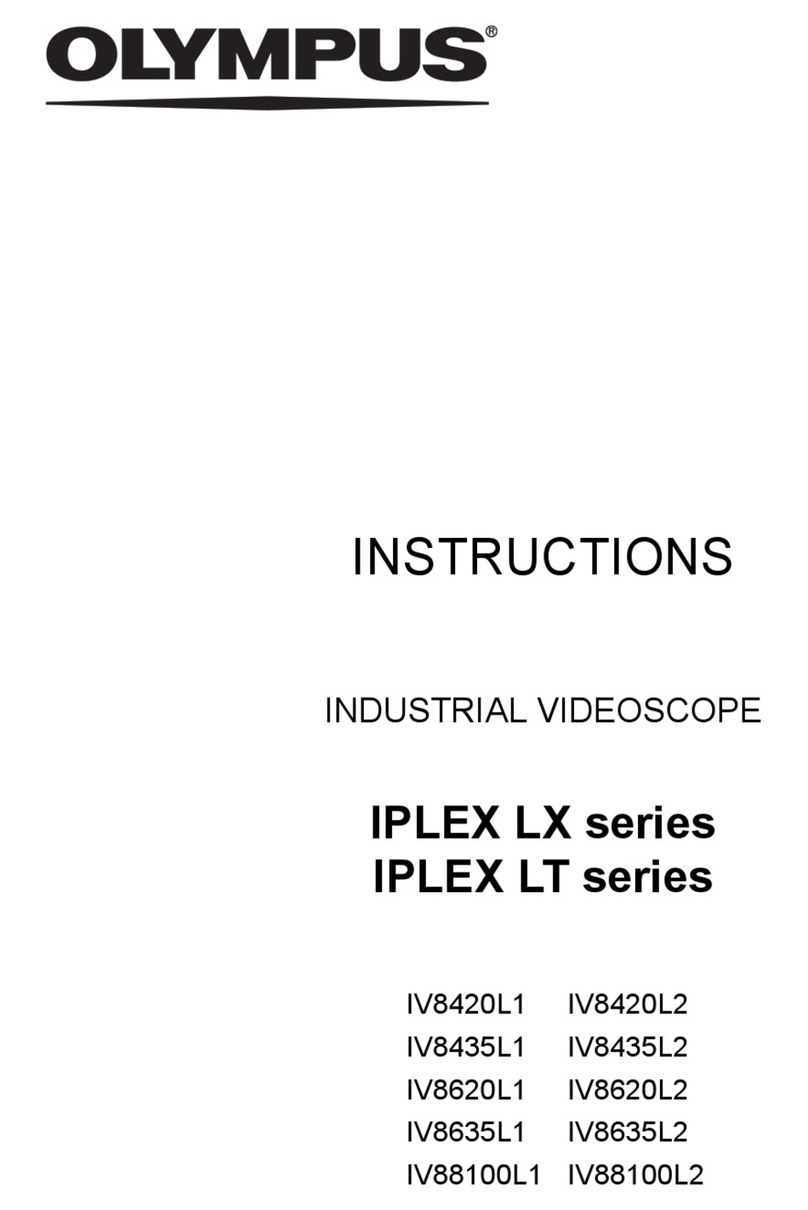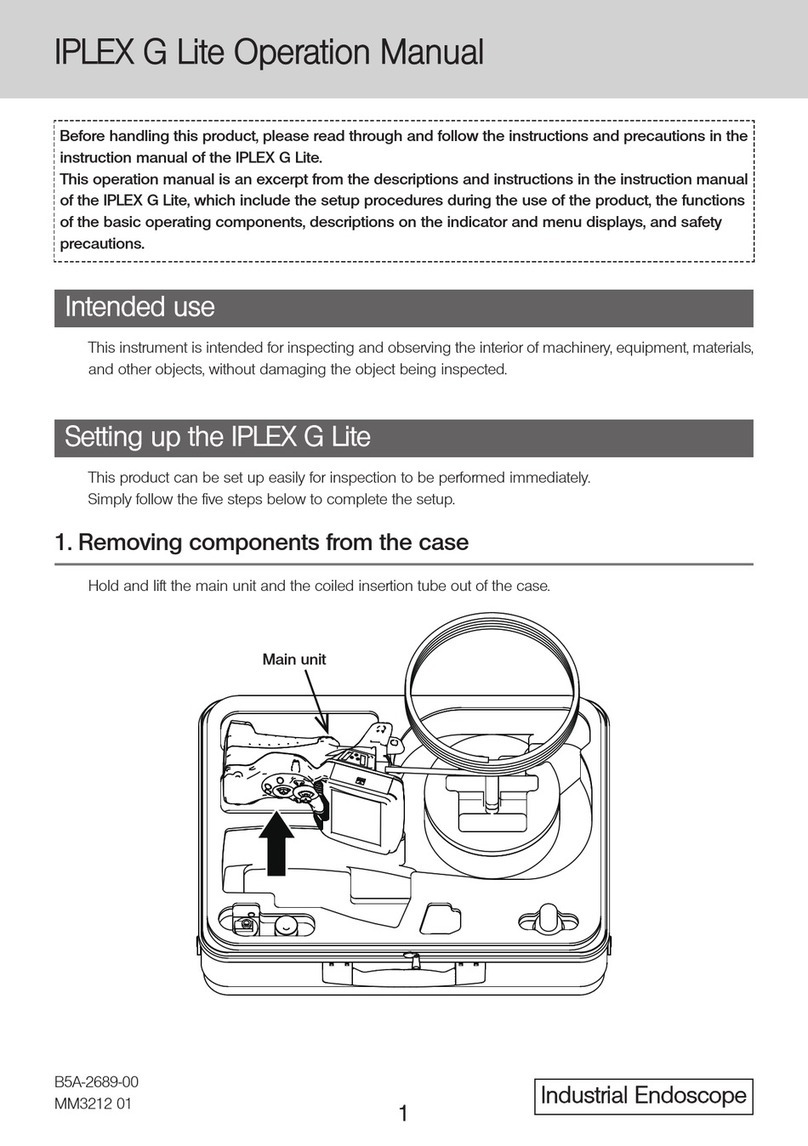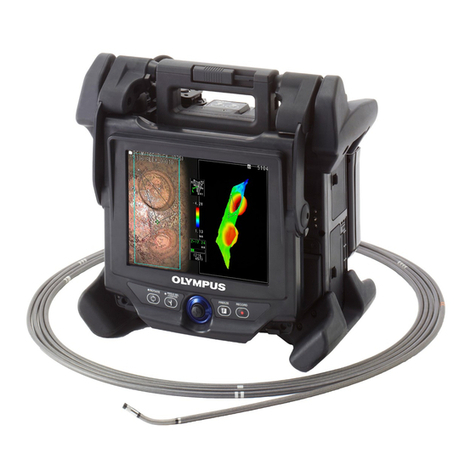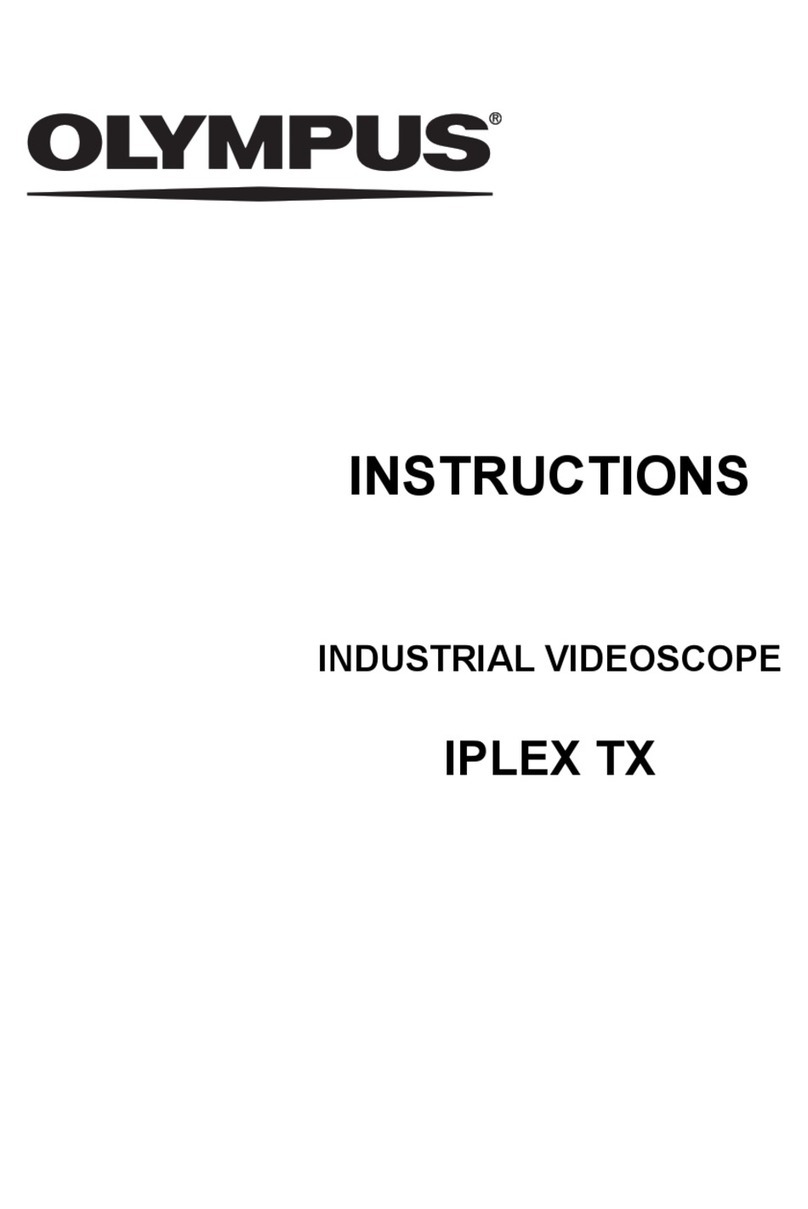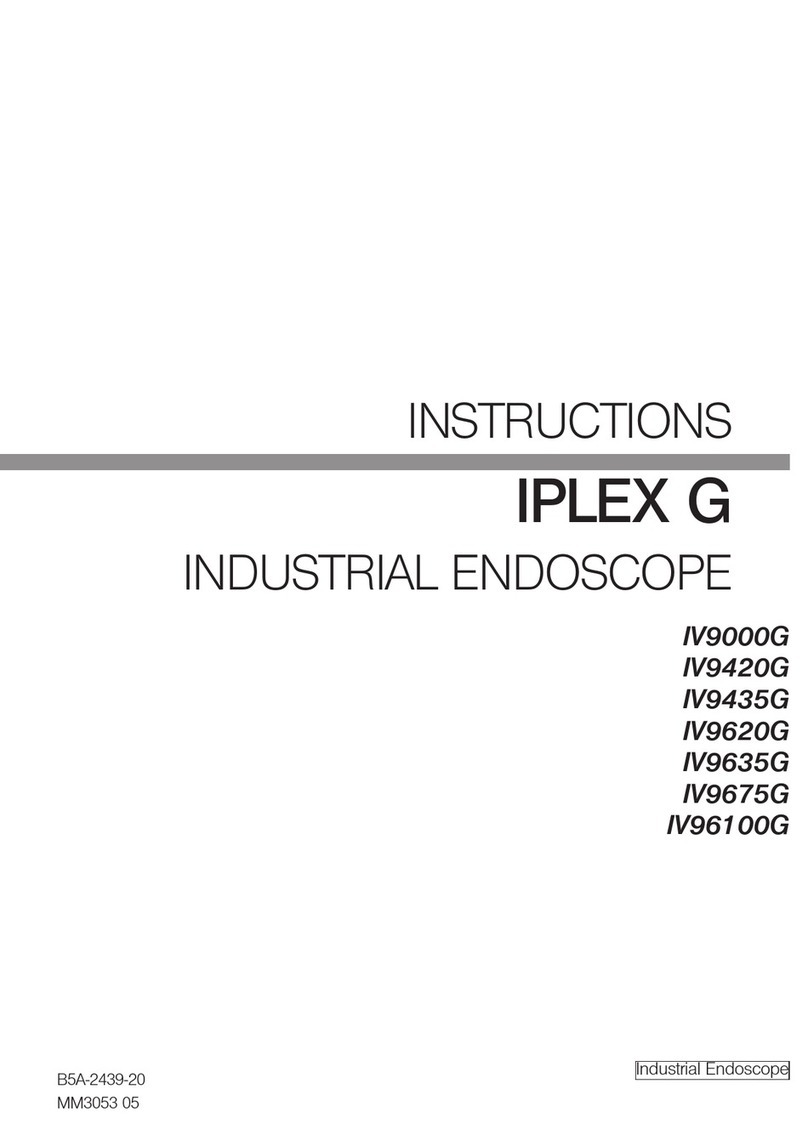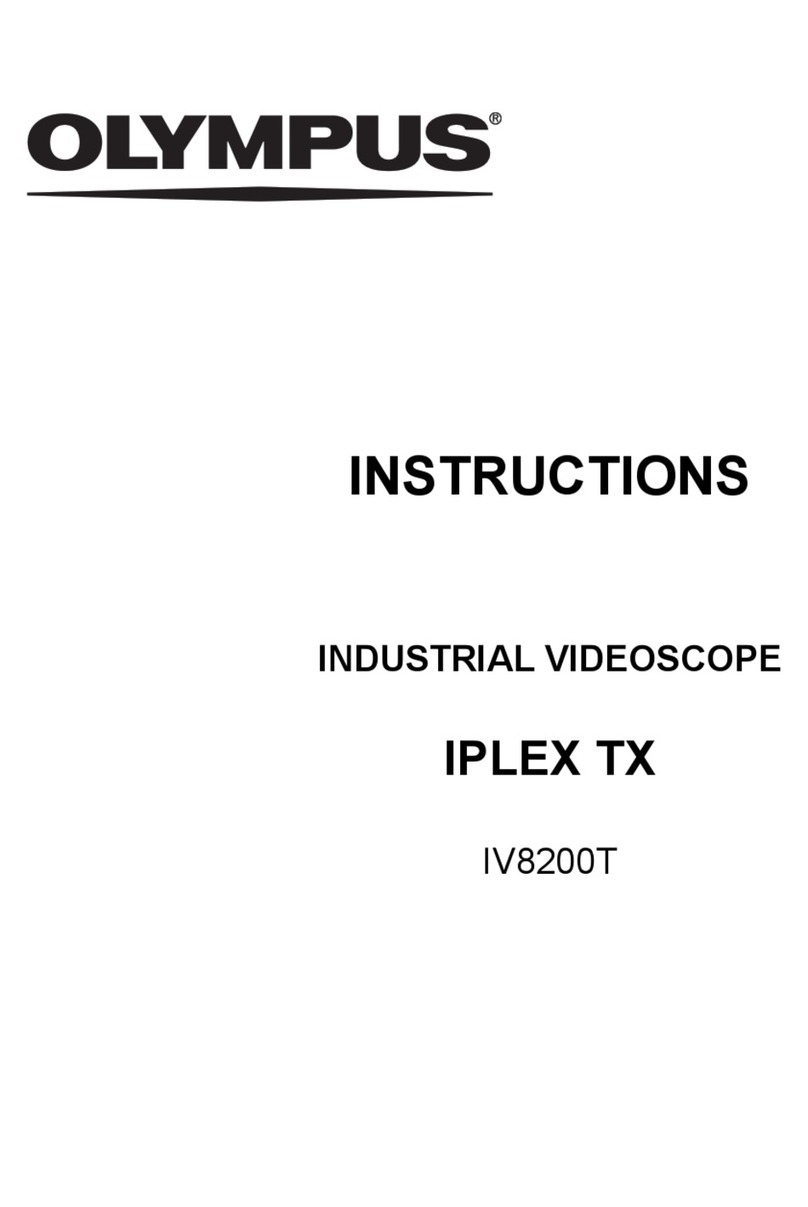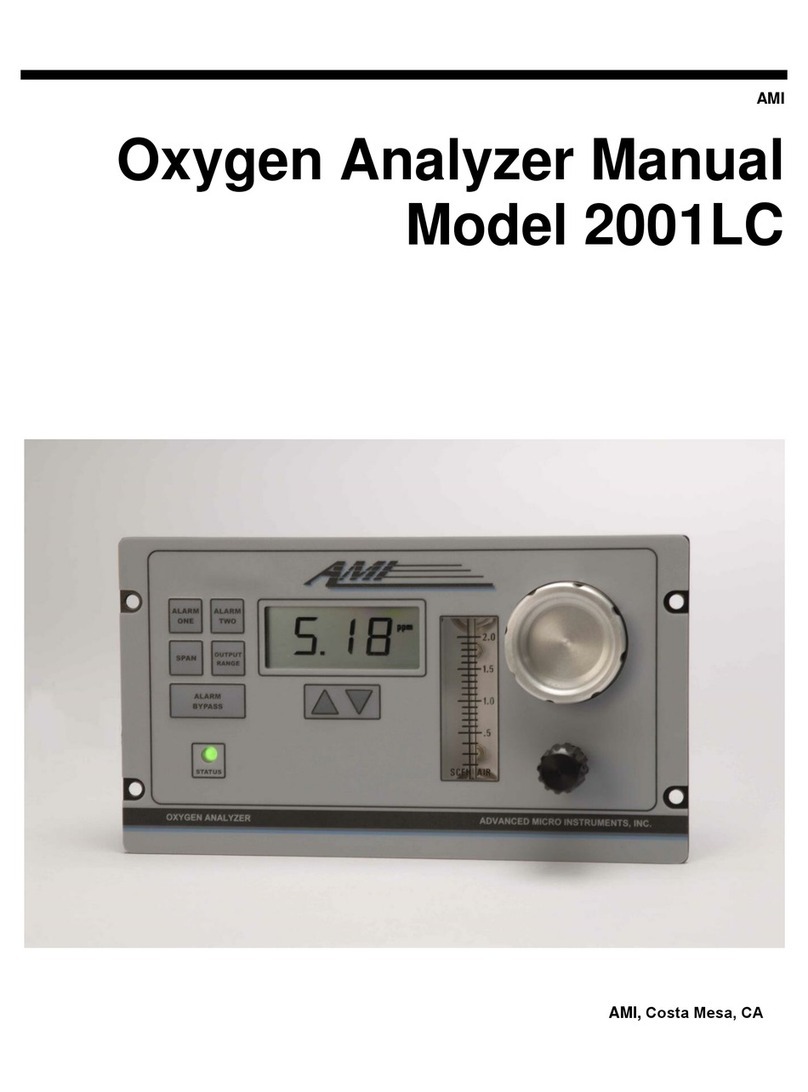
10
•Do not use components other than the insertion tube in the rain or in water, and do not wash them with
running water or a wet object.
This instrument is not waterproof. Exposure to water may result in electric shock. It must not be used or
stored in water.
•Do not hit the LCD monitor with an object, press it with force, or rub it with hard or sharp objects.
Doing so may break or scratch the LCD monitor, or cause injuries as a result of the damaged monitor.
•Do not insert metallic and other foreign objects into the main unit from the connectors or other openings.
Otherwise, a malfunction or electric shock may result.
•Check to make sure that the SD card is correctly loaded before using it.
The SD card might come out if it is not inserted into the slot as far as it will go, if the instrument is subjected
to impact during transport, etc.
•Do not remove the battery or AC adapter while the system is running.
Otherwise, recorded data may be damaged.
•Connect the AC adapter, do not insert or remove an SD card, and do not connect or disconnect the USB
cable while image data is being exchanged with a PC.
Otherwise, the data recorded in the SD card may be destroyed.
•When you have the instrument hung from your neck, take care to avoid getting tangled with other nearby
items.
Take care to avoid entanglement and possible strangulation.
•Do not continue to use the instrument when it is wet with condensation.
Sudden temperatures changes such as those that occur when entering a warm room from the outside cold
can cause condensation to form inside the instrument. Using the instrument while it is wet with
condensation can cause malfunction. If condensation forms, leave the instrument in the environment
where it is to be used and allow the condensation to dry before using it.
•Do not cover the main unit with a plastic bag or other objects during use.
The interior of the instrument may not be sufficiently cooled, resulting in damage of the instrument.
•Do not expose the insertion tube to liquids other than water, saline solution, machine oil, and light oil.
Doing so may damage the insertion tube.
•Pay attention to the following when handling the battery door, SD card slot cover, terminal cover, and AC
adapter terminal cover.
-Do no open or close the covers with wet hands.
-Do not open or close the covers in a humid or dusty environment.
-Keep the covers closed when storing the instrument or when the terminals are not in use.
•Pay attention to the following when taking the instrument out of the carrying case.
-Do not apply undue force when pulling the insertion tube from the slot in the cushion.
-When removing the main unit, do not lift it up by the insertion tube.
Otherwise, the instrument may be damaged.
•Note the following precautions whenever stowing the instrument in its carrying case.
-Make sure that the insertion tube is not twisted before storing it.
-Make sure the distal end has cooled before storing it.
-Restore the joystick to the neutral position when storing the instrument.
•Do not store the instrument in the following locations.
-Environments subjected to high temperature, high humidity, and large amounts of dust or particulate
-Locations exposed to direct sunlight or radiation
-Locations subject to gas that includes halide*1
Doing so could damage the equipment.
*1 The performance of some kind of electric parts will be deteriorated by the gas including the halide
contained in the insecticide, the herbicide, and the gas extinguishant, etc.
•When disposing of this product, be sure to do so in accordance with all local laws, rules, and regulations.
Before disposing of this product, check your local laws, rules, and regulations and follow them accordingly.
